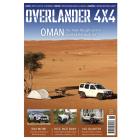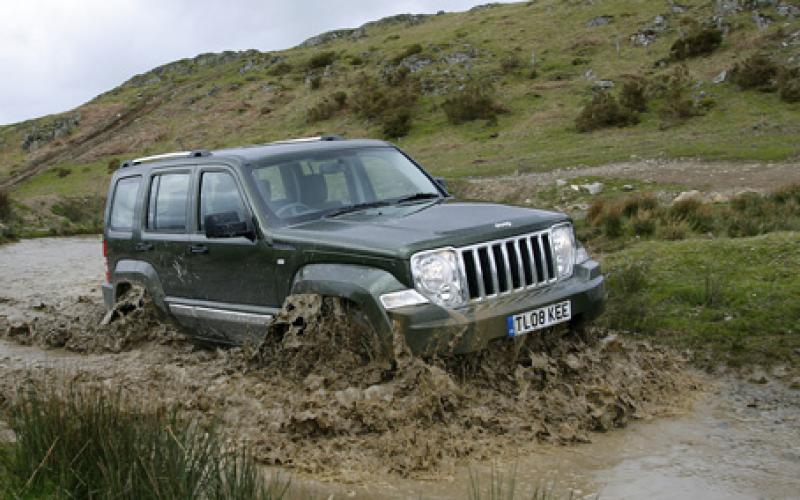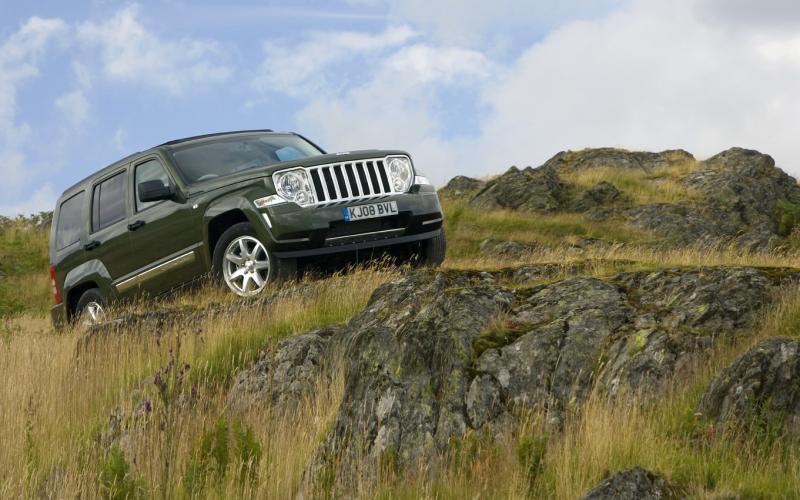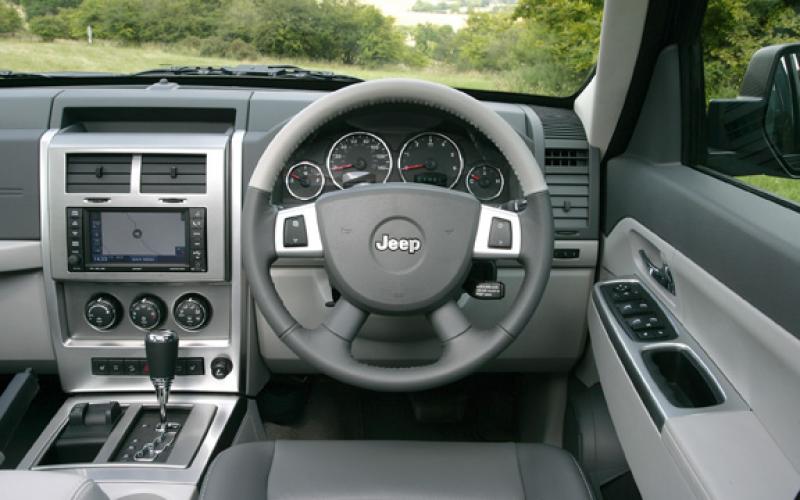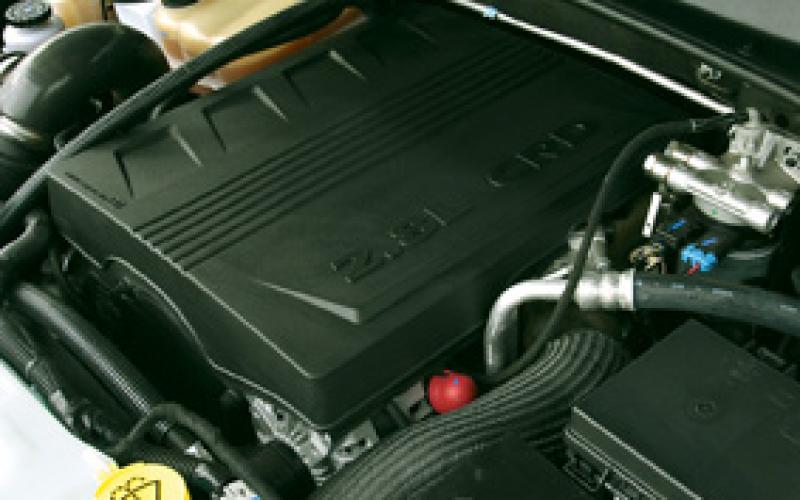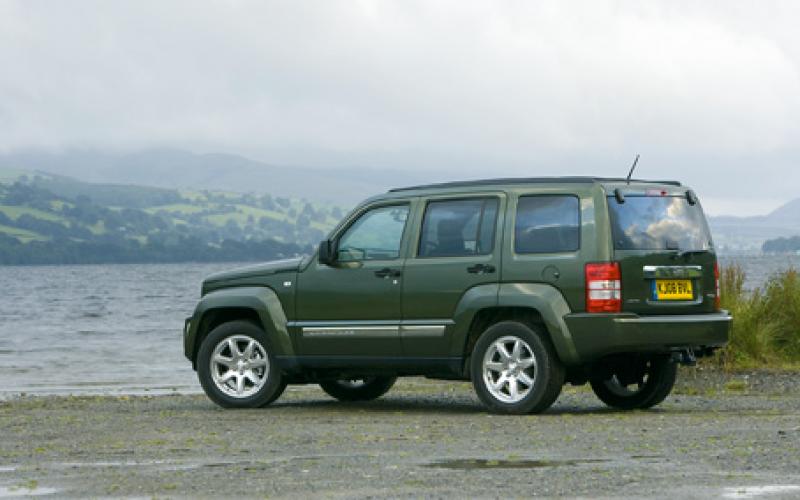Jeep Cherokee ♦ Vehicle Test ♦
The third generation of Jeep’s original 4x4 wagon is no longer a Discovery rival in terms of price, kit or luxury. But suddenly there’s a range of tarmac-bashers trading on the brand’s iconic status – meaning the Cherokee can at last concentrare more on being a proper off-roader.
It wouldn’t be unfair to say that when the original 4x4 boom happened in the early 1990s, the Jeep Cherokee was at its heart. Not only was it the volume-seller within a product offensive that marked the return of American brands to the UK, it was the vehicle which, above all others, symbolised what off-roaders had become.
Two decades earlier, the Range Rover had created the concept of the premium 4x4. But the Cherokee was a premium 4x4 for the average man. It was a family estate car – which also happened to be an off-roader. It would be entirely reasonable to list it as one of the definitive vehicles of modern times.
Today, the Cherokee’s place in the grand scheme of things is very different. Launched last year, the third-generation model is a real 4x4 in a market full of soft-roaders. The wonderful 4.0-litre petrol engine that gave the old Cherokee so much character may have given way to a far more frugal diesel unit, but people are a lot less gung-ho to buy traditional 4x4s than they were back then. The RAV4, Freelander, X-Trail and Kuga are all in a similar price bracket, but Jeep has to be sanguine about the fact that the Cherokee is never going to match their sales figures.
Why? Simply because the Cherokee remains a proper off-roader. It has low box, and it has a live rear axle. It may not be as hardcore as the original 1993 model, which had a live front axle, too, but it’s still the real thing.
In Jeep’s words, this latest Cherokee is ‘as capable on-road as off.’ This is a claim manufacturers have been making for their 4x4s ever since people started using them as everyday cars, of course: you could and ask why, if it’s possible to build a vehicle which achieves this engineering holy grail, anyone would bother making a soft-roader at all, but then picking holes in marketing-speak is always like shooting fish in a barrel – easy, and strangely fun, but unlikely to teach you how to catch a fish.
So, unlike some of Jeep’s other most recent products, the Cherokee stays true to its roots. But does it do so with success?
Let’s start with its styling. Each to their own, of course, but we do think that in the metal, its high stance and big, squared-off shoulders look okay. It’s a lot more butch than the previous model, at any rate.
All very well, but it’s on the inside that Jeep has struggled over the years (the American market is famously uninterested in cabin quality). The Cherokee’s materials certainly don’t feel premium, but by and large they’ve been used more thoughtfully than in the Patriot; it’s still plasticky, though, and next to any rival from Europe or Japan it will feel cheap and nasty. You do get plenty of kit, but when was that ever a substitute for quality?
What really matters in a 4x4, though, is practicality, and things get better here. The Cherokee’s folding seats are a lesson in simplicity – an elegant one-shot mechanism brings the backs down, and as they do so the bases drop away to let them create an entirely flat floor. There are 4x4s costing twice as much whose packaging can’t hold a candle to it.
Combine this with a useful underfloor storage area and impressive rear legroom, plus well shaped front seatbacks that give those in the second row somewhere to put their knees, and you’ve got a vehicle that ticks two of the most important boxes. There are plenty of far prettier, better finished interiors around, but that’s likely to ring kind of hollow when you’re pulling out headrests, fumbling for levers and battling to heave your cargo over an uneven floor.
Less impressive are the front seats, whose top bolsters are way over-stuffed for my liking. I found that they pushed into my shoulders, leaving my lower back unsupported, even with the lumbar cushion fully engaged. I guessed I’d start getting backache after about an hour behind the wheel, and I was right.
Both previous generations of Cherokee were roundly criticised for the lack of feel in their steering, but this model is much more communicative. It handles surprisingly well, in fact, staying flat through corners and turning in with a positive feel that lets you know exactly what’s going on. It’s okay in a straight line, too, and deals well with really bad surfaces. But on averagely poor quality roads, there’s a constant buzzy patter which means it’s hard for the vehicle to get settled. Even on the motorway, there’s a roughness to its ride that never fully goes away.
The Cherokee has 18-inch tyres as standard, and it’s hard not to wonder whether this is partly to blame. A 235/60R18 tyre might look cool, but a higher profile would surely smooth things out; in the US, the Cherokee is available with a 225/75R16 tyre, and that seems much more appropriate.
Those big 18-inchers come on a funky set of alloys, which are part of a pretty meaty spec list. Among the few options is an automatic gearbox; costing £1100, this is the five-speed unit from the Grand Cherokee, which brings with it possibly the best hill descent system on the market.
Modelled on the ratios in the Wrangler Rubicon, the speed at which this will hold the vehicle is dependent on the gear you’re in; about 1mph in first, 2.5mph in second, 3.7mph in third, 5.6mph in fourth and 7.5mph in fifth or drive. It works in reverse, too, holding you to 1mph on a failed hillclimb, and is also programmed not to exceed 2.5mph should you mess up and throw it into neutral.
This is an incredibly impressive party trick in the Cherokee’s repertoire, but there’s much more to it than just that. Even on its standard road-biased, low-profile tyres, it gets about off-road with surprising tractability. That doesn’t just mean the traction control is constantly getting it out of trouble, either; while the system did kick in at times on the way up hills on our prescribed test course, and will no doubt also do so on the sort of grass-on-saturated-mud that road-pattern tyres hate so much, there’s enough ground contact in the vehicle’s suspension to let it get around even without the application of modern technology.
We thought the over-firm suspension let it down a little on bumpy ground, where once again a less eager set of shocks might improve it, but it’s no less sure-footed for all that. Thus the new Cherokee does at first sight appear to be a more than worthy successor to the old model from a decade and a half ago. It does suffer badly from the way the rest of the world has moved on in terms of interior quality, and its ride is a sad let-down, but it’s among the most credible vehicles Jeep now builds.
At £24,295 in manual form, the Cherokee looks like decent value next to the sort of softer-roaders it will compete with. If they’d bring in the base-speccer, though, which would cost around £21,495 based on its US price, the deal would be far better – as would the vehicle.
Even in its ill-conceived Limited form, however, the Cherokee is the real thing off-road. Almost anything else is better as a daily drive – but if you want an authentic 4x4, this is a vehicle which, in every way, goes where its rivals fear to tread.
Verdict
The Cherokee is the real thing off-road, adequate on-road and a doughty tow truck. That’s if you can forgive its flaws – but they do take a lot of forgiving.
+ Genuinely capable off-road; good blend of suspension design and clever electronics. Decent road-handling, above average practicality
- Material quality in the cabin is frankly unacceptable. Low-profile tyres do it no favours on or off-road. You can’t get a low-price, high-value version



